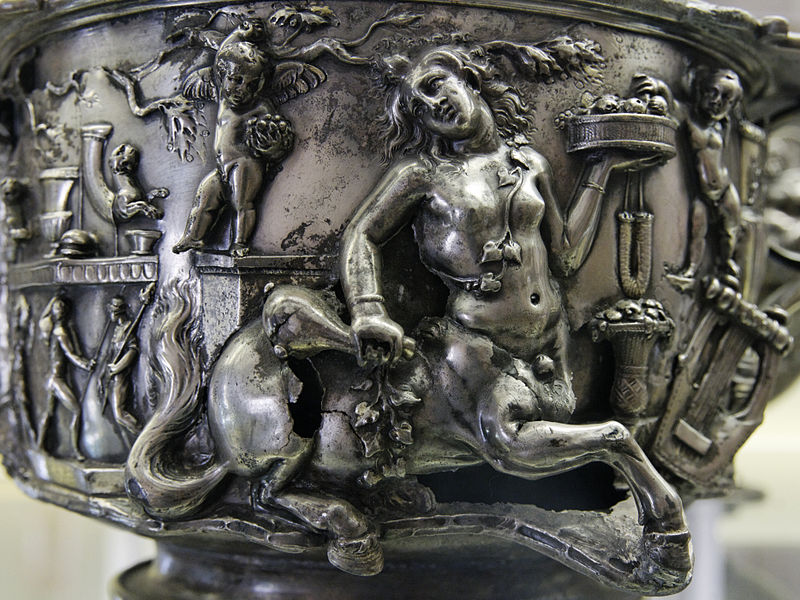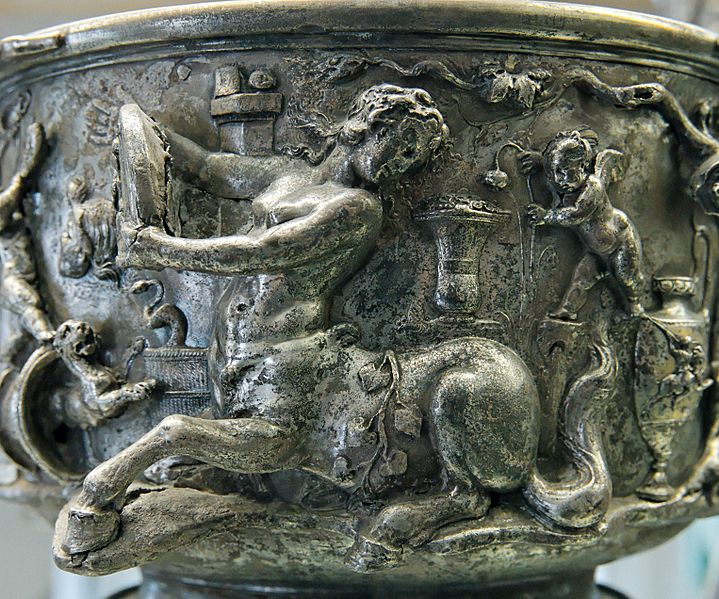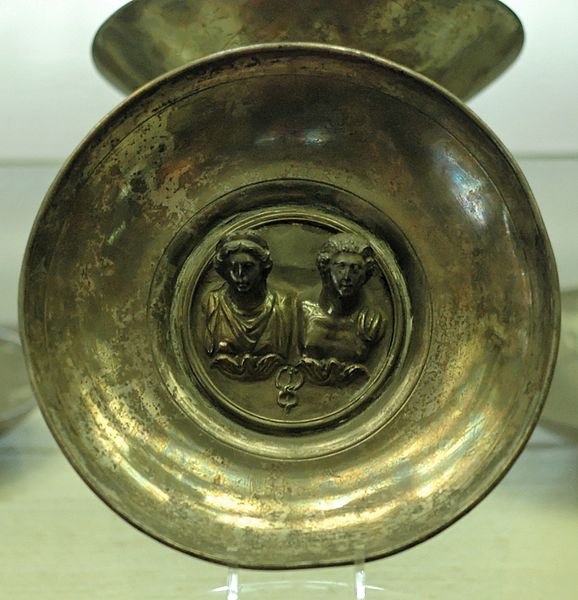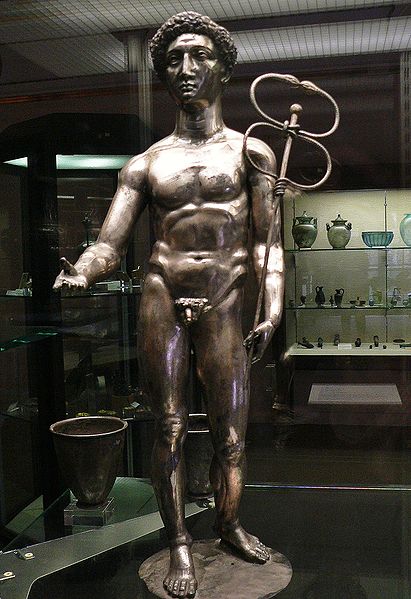
Following four years of meticulous conservation and research in the J. Paul Getty Museum's Antiquities Conservation Department, the exhibition Ancient Luxury and the Roman Silver Treasure from Berthouville, on view at the Getty Villa November 19, 2014, to August 17, 2015, will present this unique collection of ancient silver in its full splendor and offer new insights about ancient art, technology, religion, and cultural interaction. The opulent cache - in the collection of the Cabinet des médailles (now the Department of Coins, Medals and Antiques) at the Bibliothèque nationale de France - is displayed in its entirety for the first time outside of Paris, together with precious gems, jewelry, and other Roman luxury objects from the Cabinet's royal collections.
"Since 2010, this magnificent collection of silver objects has been undergoing extensive conservation and study at the Getty Villa, providing us a unique opportunity to examine the production of Roman luxury materials and seeing what this has to teach us about the art, culture and religion of Roman Gaul," says Timothy Potts, director of the J. Paul Getty Museum. "Being able to display this dazzling hoard at the Getty Villa is a great privilege for us and our visitors, and we have the added satisfaction of knowing that they will return to France much better understood and looking spectacularly better than before."
While the treasure - consisting of about 90 silver objects weighing more than 50 pounds - was first discovered in 1830, it was not until 1861 and again in 1896 that the site was extensively surveyed and excavated, uncovering the foundations of a Gallo-Roman fanum, a square colonnaded precinct with two temples. One was dedicated to Mercury Canetonensis (of Canetonum), while the other was devoted to his mother Maia or his consort Rosmerta. A theater-shaped gathering space was also found nearby. The site survey did not reveal any evidence of an ancient settlement or cemetery in the immediate area, so it's possible that Mercury's sanctuary at Berthouville was a place of pilgrimage, perhaps visited during annual festivals.
The most impressive objects in the Berthouville Treasure bear Latin inscriptions stating that they were dedicated to Mercury by a Roman citizen named Quintus Domitius Tutus. Several of the vessels, profusely ornamented in high relief and then gilded, are recognized today as among the finest ancient Roman silver to survive. The elaborately decorated imagery of Tutus's offerings, except for one ladle that was manufactured specifically for Mercury, feature Bacchic motifs and mythological scenes that are more appropriate to luxurious dining than religious observance. These items were probably presented to Mercury at Berthouville after initial use as private display silver. Subtle differences in their dedicatory inscriptions may indicate that they were given to the god over the course of a few years, again suggesting that it was perhaps offered during annual festivals.

In December 2010 the entire treasure, as well as four unrelated late antique silver platters or missoria from the Cabinet's collection, arrived at the Getty Villa for a comprehensive conservation treatment. The four-year project focused not only on restoring the works but on historical research, careful study, and meticulous cleaning. This treatment has revealed much of the original gilding, additional inscriptions, and valuable evidence for ancient production techniques as well as nineteenth-century methods of restoration.
"We are privileged that our colleagues in Paris have entrusted us with these exquisite objects. The opportunity to study them over an extended period of time has produced valuable new insights about the unsurpassed artistry of ancient Roman silversmiths," said Kenneth Lapatin, exhibition curator and associate curator of antiquities at the J. Paul Getty Museum.

The four missoria, on view in the final section of the exhibition, were luxury objects in Late Antiquity. They were primarily intended to display the wealth, status, and cultural aspirations of their owners. The two largest platters are the famed "Shield of Scipio" (found in the Rhone near Avignon in 1636) and "Shield of Hannibal" (found in the Alps in 1714). The shape, scale, and imagery of these two platters led early scholars to erroneously identify them as votive shields of historical generals - the Roman Scipio Africanus and his rival, the Carthaginian Hannibal.




Reader Comments
to our Newsletter